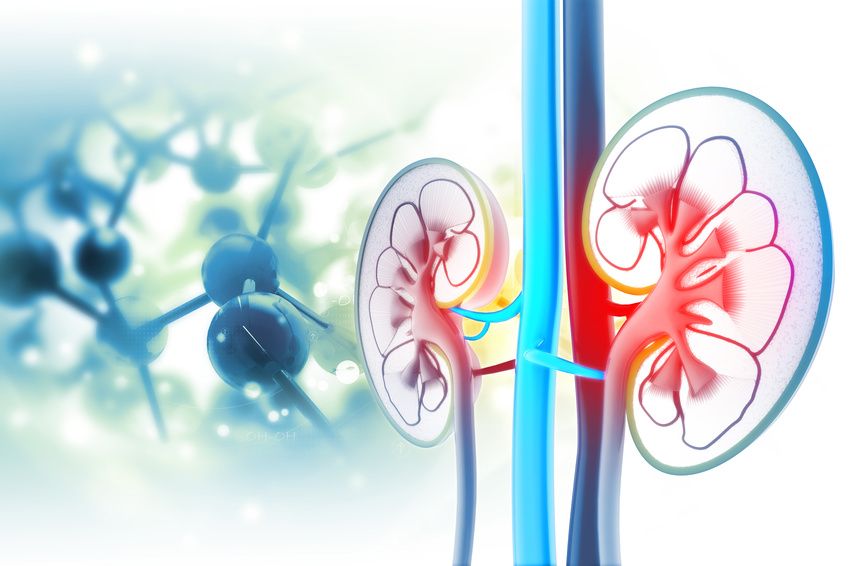
(Vienna, 29 May 2017) New treatment strategies over the last few decades have meant that nowadays 95% of transplanted kidneys function well for at least one year and that the average lifespan of a transplanted organ is between 10 and 15 years. In 1989, one in five kidneys was no longer functional after one year. This is one of the central findings of a review that leading journal "The Lancet" invited Reiner Oberbauer to undertake on the current status of research in this area. "This also underscores the importance of our publications and the fact that MedUni Vienna occupies a leading position in transplantation, even on the international stage," says the Head of MedUni Vienna's Division of Nephrology and Dialysis.
95 – 96% of transplanted kidneys take and function well for ten years, while only 4 – 5% fail and have to be replaced. "This is a good result and the trend is favourable," says Oberbauer, "but The Lancet wanted to know from us whether there are any strategies to improve this ratio even further in the future."
Bone marrow transplants help foreign organs to be accepted
These strategies include the most innovative approach to date, which is investigated by Thomas Wekerle (University Department of Surgery): as well as the kidney, bone marrow from the donor is also transplanted into the recipient to get tolerance: this is known as "chimerism". This expression comes from the chimera, which was a hybrid creature in Greek mythology. In chimerism, patients have two lots of bone marrow – their own and the donor's. If the foreign bone marrow implants successfully, the recipient's body does not identify the donor organ as being "foreign". Initial pilot studies throughout the world have shown that this method is highly promising.
The advantage: it would no longer be necessary to use immunosuppressants to counteract the immune response to reject the transplanted organ. These drugs would no longer be necessary. At the moment, bone marrow transplantation requires radiotherapy and the use of cytostatic drugs – both of which are highly toxic and are associated with many unpleasant side-effects for the patient. "If we could eliminate this toxicity, this would open the way for the establishment of medication-free tolerance in the clinical organ transplant”, says Wekerle. Researchers have great hopes of the use of the recipient's regulatory T cells.
Further improvements in the preservation of transplanted kidneys could mean that there will be a Europe-wide kidney donor programme in the future – similar to that operated by the USA since 2014. While the current system in Europe is that a kidney is given to the person who has most urgent need of it, the programme operated in the USA uses specific algorithms to analyse exactly which kidney is best suited to which recipient (age, tissue match, etc.) and also how long it will be of use to this recipient. Says Oberbauer: “It's no use to either party if someone is given a kidney from a 20-year-old, only to die anyway a few years later. This kidney should be given to someone that can benefit from it the longest."
Other strategies that are becoming increasingly important include thinking at an early stage whether a friend or relative could donate a kidney or be considered as a potential donor. Says Oberbauer: "Recent studies conducted at MedUni Vienna have shown that performing a transplant before dialysis starts can extend life expectancy."
Refrigeration of the donor kidney also offers significant improvements and is easy to do when kidneys are being donated by people who have died. It was shown that refrigerated kidneys "start up" 40% better than unrefrigerated ones. A similar effect is also to be observed in the case of donor kidneys that have been perfused externally prior to being transplanted. In the future, xenografts could also be an interesting alternative, that is to say tissue cells from two different species – currently the scientific community is conducting studies with porcine islet cells.
Service: The Lancet
"Strategies for long-term preservation of kidney graft function." Thomas Wekerle, Dorry Segev, Robert Lechler, Rainer Oberbauer. The Lancet, May 2017. DOI: 2017, 389: 2152-62.
The Lancet
The Lancet is one of the oldest and most highly regarded medical journals in the world and has every article that is submitted checked by experts in the respective field. The journal is published by Elsevier on a weekly basis, is available online and has an impact factor of 44,002. In the "general and internal medicine" category, which comprises 153 publications, "The Lancet" is second only to the New England Journal of Medicine. Having a publication appear in this magazine can therefore be regarded as a huge academic achievement.